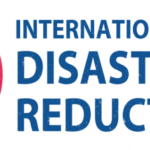What does it take to start fish hatchery?
Well, actually you must have good quality water and better source of fish parent stock; that’s brood stock to have a hatchery that will be viable, a hatchery that people will like to come and buy your fish when they are stocking their ponds. By the time you buy brood stocks that are not good, even you will be running at a loss, because the fingerlings that will be coming out will not survive the harsh conditions of the water especially the PH. Water PH is very important for the growth of the fish and to reduce mortality. Another thing I want to say about hatchery is, if you have a very good source of different species of fish, you can do a lot of things in the hatchery.
What is water PH?
The water PH is the quality of water with respect to acidity. Normally there are test kits to test the water PH in any farm or any water you are drinking. Normal PH is 7 to 8 for good water for fish. But if it is above 8 definitely you will have problems, if it is less than 7 that is another problem. So, the PH must be maintained at the normal level by experts for the fish to grow well.
How much does one need to start fish hatchery business?
Well, if you want to start it on a small scale, with less than N10,000 you can start. Some people are using small bags to start hatchery. Some are even using troughs. It could be a flow-through system, it will be high tech; high tech in the sense that there are certain hatcheries that can manage, maintain and regularise your water: the temperature is normalised, everything is kept to standard. Let’s say it is automated hatchery; that one you need N500,000 to N1 million. It depends on what you want. That one is for commercial farms, but if you want to start behind your house, you can start with ordinary wooden trough; you nail wood, put tarpaulin inside, put water and with that you can do a simple flow-through system. You just carry your male and female, after spawning they will hatch and will start flushing and all that. But the quantity of fish that comes out of that one is not much. Normally it’s always better to have a standard hatchery.
Can you tell us the various stages of fish growth right from the fries. And for those that want to start fish farming, how many weeks old fish is the farmer supposed to start with?
Actually, from the hatchery aspect, when you hatch, the hatchlings are called fries. A fry is just a day to about two weeks old; the post-fry is about two to four weeks old. Then we have fingerlings which are about six weeks old. Fishes that are about 15 to 20cm are the ones we call standard juveniles. So, the standard juveniles are the recommended kind of fish that fresh farmers are advised to use, because with that you can reduce the ratio of cannibalism and mortality.
The reason why this is very important is because when you stock fingerlings, the rate of cannibalism is high, may be from 100 fingerlings they will reduce to about 40 when you are harvesting. If you stock standard juveniles, you have about 50% harvest of whatever you stock. The sizes are okay, they are very active and you can manage them very well.
Which type of pond do you think is best for fish farming in an area like the North where the weather is always hot?
The fish ponds that enhance fast growth are the earthen ponds because they are better and in their natural environment. But for good management, the concrete ponds are better due to shortage of water in the North. You can sort your fish – you drain the water and sort the bigger ones from the smaller ones and put back your water. Though the growth is slow but you can manage the fish better. But the earthen ponds, the water may dry off if you don’t have any stream or any standard borehole to refill.
We have seen where you are hatching fish in your farm and we also discovered that you are installing a feed mill, what is the mill for?
Actually it is for fish. We are using it to produce pelletised fish feeds, though they are not floating, but we are planning to get floating feeds machine. Floating feeds machines are available in Nigeria today.
How do you feed the fries and the fingerlings?
We have assorted feed depending on the age of the fish. We feed the fries in the hatchery with fry feeds. Though they are expensive we have them in different categories and different products. We have artemia; life artemia and capsulated artemia. Life artemia are the ones that are alive but capsulated artemia are the ones that are already hatched and packaged in a can. So, both of them come in cans, but if you use life artemia the result is better than capsulated artemia. All of them are granulated feeds, just like powder.
Generally, fish production in Nigeria seems to be far below what we consume and that leads to importation, how do you think local fish production can be enhanced?
Well, sincerely this is something that is dear to my heart. I was imagining if we are 150 million people or more and if one person should eat one fish in a year, we need to produce about 150 million fish per annum. But it’s not possible for one to eat just one fish in a year; it’s possible for one to eat 10 in a year. So, we need to produce more fish. More people should go into fish farming on large scale. There are no mega fish farmers in the country. The government should encourage the fish farmers through subsidy to produce more.
Some people want to go into fish farming but don’t have land, how can they start the business?
Although it’s important, but you don’t need to have land, you can start at your backyard with concrete, plastic or collapsible ponds. You can rent land or ponds to start fish farming and later expand and get your own land. Apart from land, you must have good sources of water and fingerlings or juveniles, and you must be ready to feed them well to get better yield. You should also consult an expert for advice when you want to start so that you don’t regret it. You can start small and expand to get more profit.
Do fishes fall sick?
Yes they do, but not like in poultry. Theirs are some less serious disease conditions, but their major problem is stress due to overstocking and changing of water. When you change water frequently, they get stressed and refuse to eat. It is better to have flow-through or re-circulatory system where the water is refreshed without disturbing the fish. They will perform better.
Feeding is a major cost component in fish farming, how do you feed your fish?
We feed them with floating fish feeds. Floating fish feeds are better because they make the fish to grow fast and the fishes are bigger when harvested. Though sinking feeds are also used, they are better in the earthen pods. They are given to the fish after three months.
Sinking feeds are used in plastic and concrete tanks by fish farmers to reduce cost after the fish has grown up to three months but the weight at harvest will not be the same with fish fed with floating feeds. It costs about N250 to N300 to raise a fish to table size. The floating feeds are expensive but more companies producing floating feeds are coming into the country. The price will reduce so that fish farmers can buy and feed the fish well.
 Join Daily Trust WhatsApp Community For Quick Access To News and Happenings Around You.
Join Daily Trust WhatsApp Community For Quick Access To News and Happenings Around You.



